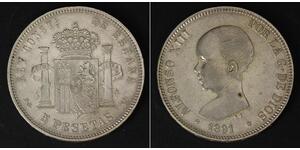1 Dinar
1273, Aquileia, Raimondo della Torre. Scarce Silver Denaro Coin. PCGS XF-45!


Mint Place: Aquileia
Denomination: Denaro
Mint Period: 1273-1298 AD
Reference: Bernardi 30, Biaggi 154. R!
Condition: Certified and graded by PCGS as XF-45!
Diameter: 22mm
Material: Silver
Weight: 1.1gm
Obverse: Patriarch seated facing, holding cross-topped staff and Bible.
Legend: + RAIMV-NDV' PA
Reverse: Crossed fleur-delys scepters in saltire. All within inner circle.
Legend: + AQVILEGENSIS
 The Patriarchate of Aquileia (Italian: Patria del Friuli, Friulian: Patrie dal Friûl) was an Imperial State in the Friulian region of Northeastern Italy under the control of the Patriarchs of Aquileia. During the Investiture Controversy in 1077, King Henry IV of Germany on his way back from Canossa vested Patriarch Sieghard of Beilstein with immediate comital rights in the eastern Friulian lands of the March of Verona. The former Veronese margrave, the Zähringen Duke Berthold II of Carinthia, had been deposed as he had sided with antiking Rudolf of Rheinfelden, and his successor Liutold of Eppenstein only retained a smaller margraviate. Sieghard in turn safely conducted the king across the Alps. Back in Germany, King Henry in addition nominally assigned the suzerainty over the marches of Carniola and Istria to the patriarchs as ecclesiastical Princes of the Holy Roman Empire. The act, traditionally regarded as the birth of the ecclesiastical state of Aquileia, led to a long-time conflict with the rivaling margraves from the Carinthian House of Sponhei The Patriarchate subsequently extended its political control in the area: regions under Aquileian control in the following centuries included the Friulian lands up to Cadore, the city of Trieste and the central parts of the Istrian peninsula. At its maximum height, the Patriarchate of Aquileia was one of the largest states in Italy. Noblemen from the Patriarchate were protagonists in the Crusades. In 1186 Patriarch Gottfried (Gitifredo Tedesco) crowned Frederick Barbarossa's son, Henry VI, as King of Italy: in retaliation, Pope Urban III deposed him. From 1127 the vogts at Gorizia from the Meinhardiner dynasty emerged from Aquileia, calling themselves Counts of Görz. Their autonomy was strengthened, when they inherited the Imperial County of Tyrol in 1253 and were elevated to Princes of the Holy Roman Empire by Emperor Charles IV in 1365. In the early 13th century, particularly under Volchero (1204–1218) and Bertrand (1218–1251), the Patriarchate had a flourishing economy and cultural life, favoured by good roads network. Damaged by earthquakes and other calamities, and reduced to a few hundred inhabitants, Aquileia was nearly abandoned in the 14th century. The capital of the state was moved first to Cividale and then, from 1238, to Udine in central Friuli, which had been a favourite residence of the patriarch since the 13th century and soon became a large city. The patriarchs had regained the rule of the Istrian march from the Dukes of Merania in 1209. However, they had to cope with the rising naval power of the Republic of Venice, which in the late 13th century had occupied the western Istrian coast from Capodistra (Koper) down to Rovinj (Rovigno). In 1291 a peace was made in Treviso, whereupon the western coast of the peninsula fell to La Serenissima. In the late century the patriarchate had to face the increasing rivalry with Venice, as well as the inner strifes between its vassals, and also became encroached in the endless wars between Guelphs and Ghibellines. In 1331 Venice also incorporated Pola (Pula) in the south. A certain recovery occurred during the rule of Bertrand (1334–1350), a successful administrator and military leader. He was killed in 1350 in a plot, at the age of ninety. The Counts of Görz had retained some interior Istrian lands around Pazin (Mitterburg), which they bequested to the Austrian House of Habsburg in 1374. In view of the Venice threat, the city of Trieste submitted to the Habsburgs in 1382. Since the transfer of the patriarchal residence to Udine, the Venetians had never lived in peace with the Patriarchate, of whose Imperial favour and tendencies they were jealous. From about 1400, La Serenissima under Doge Michele Steno and his successor Tommaso Mocenigo began to enlarge its dogado by occupying the Aquileia hinterlands. At the same time, thePatriarchate suffered a series of inner strifes between the citizens of Cividale and Udine. In 1411 this turned into a war which was to mark the end of the Patriarchate, Cividale having received support from most of the Friulian communes, the Carraresi of Padua, King Sigismund of Germany, also King of Hungary, while Udine was backed by the Venetians. In the December of that year an Imperial army captured Udine and, in the following January, Louis of Teck was implemented as patriarch in the city's cathedral. On July 23, 1419 the Venetians conquered Cividale and prepared to do the same with Udine. The city fell on June 7, 1420 after a longe siege. Soon afterwards Gemona, San Daniele, Venzone and Tolmezzo followed. The temporal authority of the patriarch was lost in 7 July 1420 when its territories were secularised by Venice. Doge Francesco Foscari in 1433 signed an agreement with Emperor Sigismund, whereby the Empire ceded the Domini di Terraferma, stretching from the Adriatic Sea to the Alps, to the Republic, then officially as an Imperial fief. The territory around Gorizia and Aquileia proper was retained by the Counts of Görz; the last Count Leonhard in 1500 bequested his lands to Archduke Maximilian I of Austria, who also annexed the city of Gradisca in 1511. The former Görz territory were incorporated into the Inner Austrian possessions of the Habsburgs. In 1445, after Patriarch Ludovico Trevisan at the Council of Florence had acquiesced in the loss of his ancient temporal estate in return for an annual salary of 5,000 ducats allowed him from the Venetian treasury. Henceforth only Venetians were allowed to hold the title of Patriarch of Aquileia. The former Friulian state was incorporated in the Venetian Republic with the name of Patria del Friuli, ruled by a General Proveditor or a Luogotenente living in Udine. In 1523 Emperor Charles V ultimately renounced any Imperial feudal rights to the former Aquileia territory.
The Patriarchate of Aquileia (Italian: Patria del Friuli, Friulian: Patrie dal Friûl) was an Imperial State in the Friulian region of Northeastern Italy under the control of the Patriarchs of Aquileia. During the Investiture Controversy in 1077, King Henry IV of Germany on his way back from Canossa vested Patriarch Sieghard of Beilstein with immediate comital rights in the eastern Friulian lands of the March of Verona. The former Veronese margrave, the Zähringen Duke Berthold II of Carinthia, had been deposed as he had sided with antiking Rudolf of Rheinfelden, and his successor Liutold of Eppenstein only retained a smaller margraviate. Sieghard in turn safely conducted the king across the Alps. Back in Germany, King Henry in addition nominally assigned the suzerainty over the marches of Carniola and Istria to the patriarchs as ecclesiastical Princes of the Holy Roman Empire. The act, traditionally regarded as the birth of the ecclesiastical state of Aquileia, led to a long-time conflict with the rivaling margraves from the Carinthian House of Sponhei The Patriarchate subsequently extended its political control in the area: regions under Aquileian control in the following centuries included the Friulian lands up to Cadore, the city of Trieste and the central parts of the Istrian peninsula. At its maximum height, the Patriarchate of Aquileia was one of the largest states in Italy. Noblemen from the Patriarchate were protagonists in the Crusades. In 1186 Patriarch Gottfried (Gitifredo Tedesco) crowned Frederick Barbarossa's son, Henry VI, as King of Italy: in retaliation, Pope Urban III deposed him. From 1127 the vogts at Gorizia from the Meinhardiner dynasty emerged from Aquileia, calling themselves Counts of Görz. Their autonomy was strengthened, when they inherited the Imperial County of Tyrol in 1253 and were elevated to Princes of the Holy Roman Empire by Emperor Charles IV in 1365. In the early 13th century, particularly under Volchero (1204–1218) and Bertrand (1218–1251), the Patriarchate had a flourishing economy and cultural life, favoured by good roads network. Damaged by earthquakes and other calamities, and reduced to a few hundred inhabitants, Aquileia was nearly abandoned in the 14th century. The capital of the state was moved first to Cividale and then, from 1238, to Udine in central Friuli, which had been a favourite residence of the patriarch since the 13th century and soon became a large city. The patriarchs had regained the rule of the Istrian march from the Dukes of Merania in 1209. However, they had to cope with the rising naval power of the Republic of Venice, which in the late 13th century had occupied the western Istrian coast from Capodistra (Koper) down to Rovinj (Rovigno). In 1291 a peace was made in Treviso, whereupon the western coast of the peninsula fell to La Serenissima. In the late century the patriarchate had to face the increasing rivalry with Venice, as well as the inner strifes between its vassals, and also became encroached in the endless wars between Guelphs and Ghibellines. In 1331 Venice also incorporated Pola (Pula) in the south. A certain recovery occurred during the rule of Bertrand (1334–1350), a successful administrator and military leader. He was killed in 1350 in a plot, at the age of ninety. The Counts of Görz had retained some interior Istrian lands around Pazin (Mitterburg), which they bequested to the Austrian House of Habsburg in 1374. In view of the Venice threat, the city of Trieste submitted to the Habsburgs in 1382. Since the transfer of the patriarchal residence to Udine, the Venetians had never lived in peace with the Patriarchate, of whose Imperial favour and tendencies they were jealous. From about 1400, La Serenissima under Doge Michele Steno and his successor Tommaso Mocenigo began to enlarge its dogado by occupying the Aquileia hinterlands. At the same time, thePatriarchate suffered a series of inner strifes between the citizens of Cividale and Udine. In 1411 this turned into a war which was to mark the end of the Patriarchate, Cividale having received support from most of the Friulian communes, the Carraresi of Padua, King Sigismund of Germany, also King of Hungary, while Udine was backed by the Venetians. In the December of that year an Imperial army captured Udine and, in the following January, Louis of Teck was implemented as patriarch in the city's cathedral. On July 23, 1419 the Venetians conquered Cividale and prepared to do the same with Udine. The city fell on June 7, 1420 after a longe siege. Soon afterwards Gemona, San Daniele, Venzone and Tolmezzo followed. The temporal authority of the patriarch was lost in 7 July 1420 when its territories were secularised by Venice. Doge Francesco Foscari in 1433 signed an agreement with Emperor Sigismund, whereby the Empire ceded the Domini di Terraferma, stretching from the Adriatic Sea to the Alps, to the Republic, then officially as an Imperial fief. The territory around Gorizia and Aquileia proper was retained by the Counts of Görz; the last Count Leonhard in 1500 bequested his lands to Archduke Maximilian I of Austria, who also annexed the city of Gradisca in 1511. The former Görz territory were incorporated into the Inner Austrian possessions of the Habsburgs. In 1445, after Patriarch Ludovico Trevisan at the Council of Florence had acquiesced in the loss of his ancient temporal estate in return for an annual salary of 5,000 ducats allowed him from the Venetian treasury. Henceforth only Venetians were allowed to hold the title of Patriarch of Aquileia. The former Friulian state was incorporated in the Venetian Republic with the name of Patria del Friuli, ruled by a General Proveditor or a Luogotenente living in Udine. In 1523 Emperor Charles V ultimately renounced any Imperial feudal rights to the former Aquileia territory.

Authenticity unconditionally guaraneed.
Raimondo della Torre (died 23 February 1299) was an Italian clergyman, who was patriarch of Aquileia from 1273 until his death. He was a member of the della Torre Guelph family.
He was the son of Pagano I della Torre, lord of Milan and Valsassina, and the brother of Napo della Torre. He was archpriest of Monza in 1251–1262, archbishop of Milan in 1261–1262 (though only namely), and bishop of Como from 1262 to 1274.
In 1269 he was captured by Conrad Von Matsch, lord of the castle of Boffalora near Madesimo, and publicly exhibited in a cage at Sondalo in Valtellina. Napo's troops freed him and destroyed the castle on 25 September 1273.
A leading exponent of the Guelph (pro-papal) side in the struggle between papacy, the Holy Roman Emperor and the Italian communes, Raimondo was appointed as patriarch/lord of Aquileia on 21 December 1273. After the battle of Desio, the defeated members of the della Torre family took shelter under him in Friuli.
During his tenure as patriarch, he constantly warred against the nearby Republic of Venice, first in the conflict for Capodistria (1274–1279) and then for Trieste (1283–1291). After raising an army of some 45,000 infantry and 5,000 horsemen, he was able to storm the fortress of Moccò in 1289, and after the peace of Treviso (1291) he annexed Trieste to the patriarchate. He later pushed back an assault by the Da Camino of Treviso and suppressed several rebellions of his vassals. In 1297 he also quenched a rebellion of the counts of Gorizia.
Raimondo died in 1299 and was buried in the basilica of Aquileia.
Only 1$ shipping on each additional item purchased!
1 Franc 比利时 銀
本组有 4 钱币 / 4 售价
⇑
5 Peseta Kingdom of Spain (1874 - 1931) 銀 阿方索十三世 (1886 - 1941)
本组有 63 钱币 / 55 售价
⇑

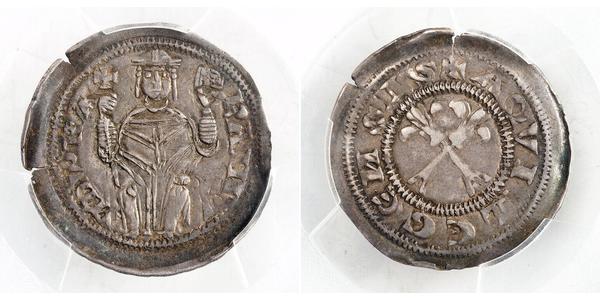


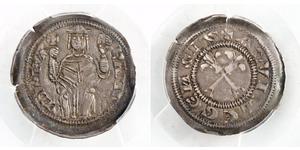
 English
English


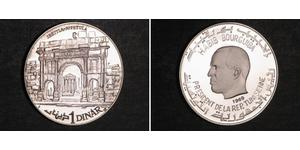

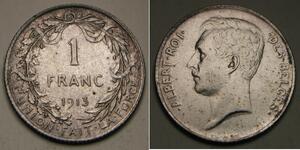
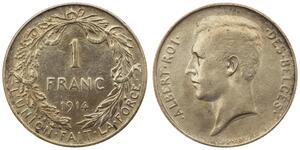
-300-150-UTAKbzbig_UAAAFLxmWjltio.jpg)
